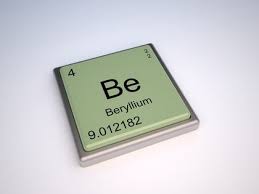 Beryllium is a metal that is stronger than steel and lighter than aluminum. Beryllium’s elemental properties include high melting point, thermal stability and conductivity, high strength to weight and transparency to X-rays.
Beryllium is a metal that is stronger than steel and lighter than aluminum. Beryllium’s elemental properties include high melting point, thermal stability and conductivity, high strength to weight and transparency to X-rays.
Workers are most likely exposed to beryllium when working in foundry and smelting operations, machining, beryllium ceramic and composite manufacturing, or a dental lab setting. Workers can be exposed by inhaling or coming in contact with beryllium in the air or on surfaces. Exposure can lead to sensitization to beryllium and cause chronic beryllium disease (CBD), acute beryllium disease and lung cancer.
Because of the hazardous effects of beryllium, OSHA proposed a new rule back in August of 2015. The proposed rule will lower the permissible exposure limit (PEL) for beryllium from 2 μg/m3 to 0.2 μg/m3 within an 8-hour time weighted average.
So how does this new ruling affect you and your company?
If the proposed rule becomes a final rule, employers will have different monitoring requirements. The PEL will be substantially lowered, which means that changes will be made to control methods for reducing exposures, training documents related to hazards and how to limit beryllium exposure, and medical surveillance. Not to mention, additional monitoring procedures may be required to make sure employers adhere to the 0.2 μg/m3 PEL.
Members of the public may read the proposal and submit written comments here. Comments must be submitted by Nov. 5, 2015.
For more information and additional resources, visit https://www.osha.gov/SLTC/beryllium/.
Source: www.osha.gov

 ">
">
 ">
">